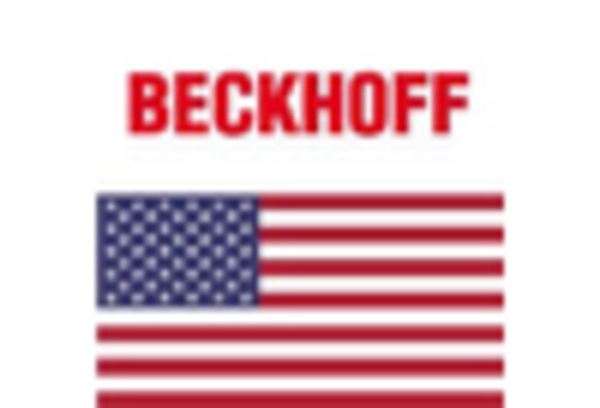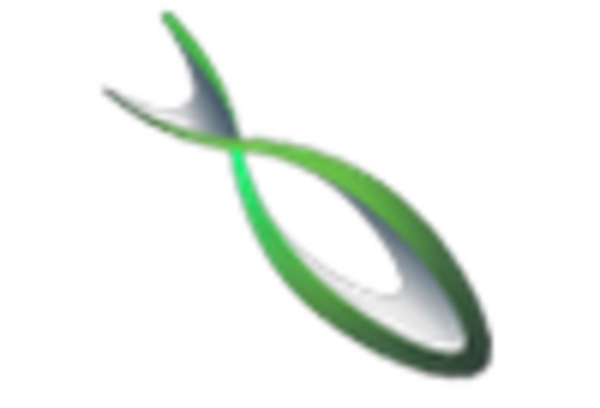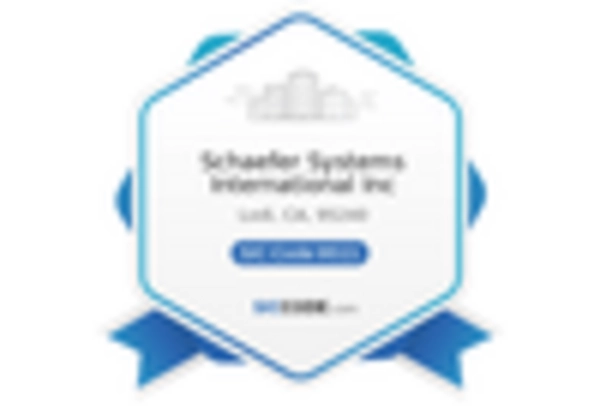Expansion of E-Commerce and Online Retailing
The expansion of e-commerce and online retailing is a major catalyst for the End of Line Packaging Market. As more consumers turn to online shopping, the demand for efficient and secure packaging solutions has intensified. E-commerce businesses require packaging that not only protects products during transit but also enhances the unboxing experience for customers. This has led to an increase in the adoption of innovative packaging designs and materials that cater specifically to the needs of online retailers. Data suggests that the e-commerce sector is projected to grow at a rate of around 10% annually, further driving the need for effective end of line packaging solutions that can accommodate the unique challenges of shipping and handling in the digital marketplace.
Increased Investment in Automation and Robotics
The End of Line Packaging Market is witnessing a significant increase in investment in automation and robotics. Companies are recognizing the potential of automated systems to enhance efficiency, reduce labor costs, and improve overall productivity. The integration of robotics in packaging processes allows for faster and more precise handling of products, which is essential in meeting the demands of modern manufacturing. Recent market analyses indicate that the automation sector within packaging is expected to grow by approximately 9% annually, reflecting a strong trend towards mechanization. This investment not only streamlines operations but also addresses labor shortages and enhances safety in packaging environments, positioning companies to better respond to market fluctuations and consumer demands.
Rising Demand for Efficient Packaging Solutions
The End of Line Packaging Market is experiencing a notable surge in demand for efficient packaging solutions. This trend is largely driven by the need for manufacturers to optimize their production processes and reduce operational costs. As companies strive to enhance productivity, the adoption of automated packaging systems has become increasingly prevalent. According to recent data, the market for automated packaging solutions is projected to grow at a compound annual growth rate of approximately 6.5% over the next five years. This growth is indicative of a broader shift towards more streamlined operations, where end of line packaging plays a crucial role in ensuring that products are packaged quickly and accurately, thereby meeting consumer expectations and improving supply chain efficiency.
Technological Advancements in Packaging Machinery
Technological advancements are significantly influencing the End of Line Packaging Market. Innovations in packaging machinery, such as the integration of artificial intelligence and machine learning, are enhancing the capabilities of packaging systems. These technologies enable real-time monitoring and adjustments, which can lead to increased efficiency and reduced waste. Furthermore, the introduction of smart packaging solutions is transforming how products are packaged and tracked throughout the supply chain. As a result, manufacturers are increasingly investing in advanced packaging technologies to remain competitive. The market for smart packaging is expected to witness substantial growth, with estimates suggesting a potential increase of over 8% annually in the coming years, reflecting the industry's shift towards more intelligent and responsive packaging solutions.
Growing Focus on Sustainability and Eco-Friendly Practices
Sustainability has emerged as a pivotal driver in the End of Line Packaging Market. With increasing awareness of environmental issues, companies are prioritizing eco-friendly packaging solutions. This shift is not only a response to consumer demand for sustainable products but also a regulatory requirement in many regions. The use of recyclable and biodegradable materials in packaging is becoming more common, as businesses seek to minimize their environmental footprint. Recent studies indicate that the market for sustainable packaging is expected to grow significantly, with projections suggesting a rise of approximately 7% annually. This trend underscores the importance of sustainability in packaging strategies, as companies aim to align their operations with global environmental goals while also appealing to eco-conscious consumers.

















Leave a Comment